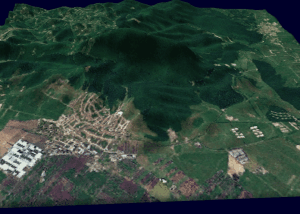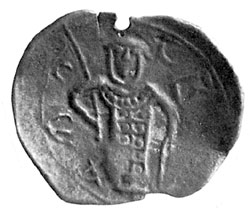|
Alexander Karászi
Alexander (I) Karászi (; died 1274/76) was a Hungarian military leader and baron in the second half of the 13th century. He was a faithful confidant of Younger King Stephen in the 1260s. In this capacity, he played an active role in the civil war between Stephen and his father King Béla IV of Hungary. He served as Ban of Severin from around 1265/1266 to 1268. He was Judge royal between 1272 and 1273, during the reign of Ladislaus IV of Hungary. He was the forefather of the Karászi (then Edelényi) noble family, which acquired possessions in Northeast Hungary, primarily in Szabolcs and Szatmár counties. Early career Alexander was the son of a certain Drugh (also Drug or Dorog). Historian Mór Wertner considered that he belonged to the ''gens'' (clan) Gutkeled. According to two charters of Duke Stephen (1267 and 1268, the text of the former was preserved only by a summary in a 14th-century charter), Alexander had served him since the youth of the prince (later king). Initially ... [...More Info...] [...Related Items...] OR: [Wikipedia] [Google] [Baidu] |
Judge Royal
The judge royal, also justiciar,Rady 2000, p. 49. chief justiceSegeš 2002, p. 202. or Lord Chief JusticeFallenbüchl 1988, p. 145. (,Fallenbüchl 1988, p. 72. ,Zsoldos 2011, p. 26. , ), was the second-highest judge, preceded only by the Palatine (Kingdom of Hungary), palatine, in the Kingdom of Hungary between around 1127 and 1884. After 1884, the judge royal was only a symbolic function, but it was only in 1918 — with the end of Habsburgs in the Kingdom of Hungary (the kingdom continued formally until 1946) — that the function ceased officially. There remain significant problems in the translation of the title of this officer. In Latin, the title translates as 'Judge of the Royal Court', which lacks specificity. In Hungarian, he is 'Judge of the Country', with 'country' in this sense meaning 'political community', being thus broadly analogous to the German 'Land'. English has no obvious translation for Landesrichter, which is the direct German translation of országbíró. ... [...More Info...] [...Related Items...] OR: [Wikipedia] [Google] [Baidu] |
Duchy Of Styria
The Duchy of Styria (; ; ) was a duchy located in modern-day southern Austria and northern Slovenia. It was a part of the Holy Roman Empire until its dissolution in 1806 and a Cisleithanian crown land of Austria-Hungary until its dissolution in 1918. History It was created by Emperor Frederick Barbarossa in 1180 when he raised the March of Styria to a duchy of equal rank with neighbouring Carinthia and Bavaria, after the fall of the Bavarian Duke Henry the Lion earlier that year. Margrave Ottokar IV thereby became the first duke of Styria and also the last of the ancient Otakar dynasty. As Ottokar had no issue, he in 1186 signed the Georgenberg Pact with the mighty House of Babenberg, rulers of Austria since 976, after which both duchies should in perpetuity be ruled in personal union. Upon his death in 1192, Styria as stipulated fell to the Babenberg Leopold V, Duke of Austria. The Austrian Babenbergs became extinct in 1246, when Duke Frederick II was killed in bat ... [...More Info...] [...Related Items...] OR: [Wikipedia] [Google] [Baidu] |
Ispán
The ispánRady 2000, p. 19.''Stephen Werbőczy: The Customary Law of the Renowned Kingdom of Hungary in Three Parts (1517)'', p. 450. or countEngel 2001, p. 40.Curta 2006, p. 355. (, , and ),Kirschbaum 2007, p. 315. deriving from title of župan, was the leader of a castle district (a fortress and the royal lands attached to it) in the Kingdom of Hungary from the early 11th century. Most of them were also heads of the basic administrative units of the kingdom, called County (Kingdom of Hungary), counties, and from the 13th century the latter function became dominant. The ''ispáns'' were appointed and dismissed by either the king of Hungary, monarchs or a high-ranking royal official responsible for the administration of a larger territorial unit within the kingdom. They fulfilled administrative, judicial and military functions in one or more counties. Heads of counties were often represented locally by their deputies, the vice-ispánsRady 2000, p. 41. (,Nemes 1989, p. 21. ... [...More Info...] [...Related Items...] OR: [Wikipedia] [Google] [Baidu] |
Elizabeth Of Poland, Queen Of Hungary
Elizabeth of Poland (, ; 1305 – 29 December 1380) was Queen of Hungary by marriage to Charles I of Hungary, and regent of Poland from 1370 to 1376 during the reign of her son Louis I. Life Early life Elizabeth was a member of the Polish royal House of Piast, the daughter of Władysław I the Elbow-high, prince of Kuyavia, later King of Poland, and Jadwiga of Kalisz. She was the sister of Casimir III of Poland, who died in 1370. Her older sister was Cunigunde of Poland, who was married to Bernard of Świdnica. Queen consort She was married on 6 July 1320 to Charles I Robert, King of Hungary. Elizabeth was Charles' fourth wife. The marriage brought an alliance between Poland and Hungary. Charles' two previous marriages are believed not to have left surviving issue, at least no surviving sons. Charles' first wife Maria of Bytom was believed to have been barren but it is also believed she bore two daughters: Catherine and Elizabeth. Others however believe that the two gir ... [...More Info...] [...Related Items...] OR: [Wikipedia] [Google] [Baidu] |
Battle Of Isaszeg (1265)
The Battle of Isaszeg was fought between King Béla IV of Hungary and his son, Stephen, who served as Junior King and Duke of Transylvania The Duke of Transylvania (; ) was a title of nobility four times granted to a son or a brother of the Hungarian monarch. The dukes of the first and second creations, Béla (1226–1235) and Stephen (1257–1258 or 1259, 1260–1270) .... Stephen defeated his father's army in the subsequent peace Béla was obliged to cede the government of the Eastern parts of his kingdom again to his son. On 23 March 1266, father and son confirmed the peace in the Convent of the Blessed Virgin on the Nyulak szigete ('Rabbits' Island'). Sources *Kristó, Gyula: Családja eredete, Csák Máté (Magyar história). Gondolat, 1983, Budapest. *Zsoldos, Attila: Családi ügy - IV. Béla és István ifjabb király viszálya az 1260-as években ''(A Family Affair - The Conflict of Béla IV and Junior King Stephen in the 1260s)''; História - MTA Tö ... [...More Info...] [...Related Items...] OR: [Wikipedia] [Google] [Baidu] |
Lawrence, Son Of Kemény
Lawrence, son of Kemény (; died after 1274) was a Hungarian influential lord and military leader in the 13th century, who held various positions in the royal court since the late 1250s. He was a skilled and loyal soldier during the reign of Béla IV of Hungary. He retained his influence in the courts of Stephen V and Ladislaus IV too, representing a stable point in the government, when two baronial groups fought for the supreme power. Through his sons, he was ancestor of the Cseményi and Matucsinai noble families. Family Lawrence was born into a noble family, which possessed lands in southern Transdanubia, especially Baranya County. His father was Kemény (I), the first known member of the family.Engel: ''Genealógia'' (Matucsinai seményifamily) He served as ''ispán'' of Nyitra County from 1234 to 1235, during the last years of King Andrew II of Hungary. Historians Gyula Pauler and Jenő Szűcs considered Lawrence originated from the ''gens'' (clan) Szentemágócs. Lawrence ... [...More Info...] [...Related Items...] OR: [Wikipedia] [Google] [Baidu] |
Feketehalom
Codlea (; ; Transylvanian Saxon dialect: ''Zäöeden''; ) is a municipiu, city in Brașov County, Transylvania, Romania. Name The Romanian language, Romanian name "Codlea" could be a derivation from the Latin , a diminutive of Latin (edge, rearward); or it could be a derivation from the Slavic languages, Slavic ''kotlík'' ("kettle"), as the ''Măgura Codlei'' (in this reading: "Kettle Hill") looks like a kettle. In Romanian, ''măgură'' means "large hill, mound, forest located on a high place". The hill also provides the Hungarian name of the city, ''Feketehegy'', "Black Hill". The German name's origin is unknown, but there is a theory that it was derived from ''Zeidler'', an antiquated word for "beekeeper". in Duden Wörterbuch (online). Accessed 24 Oct 2023. History [...More Info...] [...Related Items...] OR: [Wikipedia] [Google] [Baidu] |
Transylvania
Transylvania ( or ; ; or ; Transylvanian Saxon dialect, Transylvanian Saxon: ''Siweberjen'') is a List of historical regions of Central Europe, historical and cultural region in Central Europe, encompassing central Romania. To the east and south its natural border are the Carpathian Mountains and to the west the Apuseni Mountains. Broader definitions of Transylvania also include the western and northwestern Romanian regions of Crișana and Maramureș, and occasionally Banat. Historical Transylvania also includes small parts of neighbouring Western Moldavia and even a small part of south-western neighbouring Bukovina to its north east (represented by Suceava County). Transylvania is known for the scenery of its Carpathian landscape and its rich history, coupled with its multi-cultural character. It also contains Romania's second-largest city, Cluj-Napoca, and other very well preserved medieval iconic cities and towns such as Brașov, Sibiu, Târgu Mureș, Bistrița, Alba Iuli ... [...More Info...] [...Related Items...] OR: [Wikipedia] [Google] [Baidu] |
Mureș (river)
The Mureș () or Maros (; German: ''Mieresch'', ) is a river in Eastern Europe. Its drainage basin covers an area of .Analysis of the Tisza River Basin 2007 IPCDR It originates in the Hășmașu Mare Range in the Eastern Carpathian Mountains, , rising close to the headwa ... [...More Info...] [...Related Items...] OR: [Wikipedia] [Google] [Baidu] |
Jacob Svetoslav
Jacob Svetoslav (, ''Yakov Svetoslav'') (ca. 1210s/1220s–1275 or 1276/1277) was a prominent 13th-century Bulgarian noble ('' bolyarin'') of Rus' origin. Bestowed the title of despot, Jacob Svetoslav was the ruler of a widely autonomous domain of the Second Bulgarian Empire most likely located around Sofia. Seeking further independence and claiming the title of Emperor of Bulgaria, he twice changed allegiance from Bulgaria to the Kingdom of Hungary and vice versa, and the Hungarians recognized his Bulgarian royal rank as their vassal and ruler of Vidin (medieval ''Bdin''). Bulgarian despot Jacob Svetoslav's exact origin is not clear, though he is known to have been a distant descendant of an East Slavic noble. Historian Plamen Pavlov theorizes that Jacob Svetoslav was a descendant of the princes (''knyaze'') of Kievan Rus', and estimates his birth date as being in the 1210s or 1220s.Павлов. In the late 1250s, Jacob Svetoslav was already an influential noble. He married ... [...More Info...] [...Related Items...] OR: [Wikipedia] [Google] [Baidu] |
Despot (court Title)
Despot or ''despotes'' () was a senior Byzantine court title that was bestowed on the sons or sons-in-law of reigning emperors, and initially denoted the heir-apparent of the Byzantine emperor. From Byzantium it spread throughout the late medieval Balkans and was also granted in the states under Byzantine cultural influence, such as the Latin Empire, the Second Bulgarian Empire, the Serbian Empire and its successor states ( Bulgarian and ), and the Empire of Trebizond. With the political fragmentation of the period, the term gave rise to several principalities termed "despotates" which were ruled either as independent states or as appanages by princes bearing the title of despot; most notably the Despotate of Epirus, the Despotate of the Morea, the Despotate of Dobruja and the Serbian Despotate. In modern usage, the word has taken a different meaning: "despotism" is a form of government in which a single entity rules with absolute power. The semantic shift undergone by the te ... [...More Info...] [...Related Items...] OR: [Wikipedia] [Google] [Baidu] |




